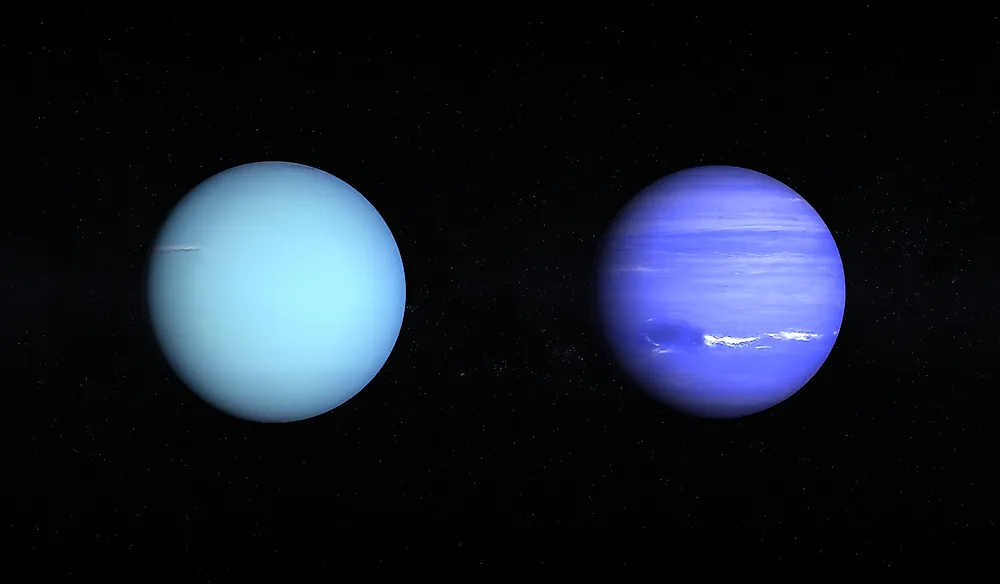What Are The Ice Giants?

Ice giants are massive planets composed primarily of elements heavier than helium and hydrogen, such as sulfur, nitrogen, carbon, and oxygen. The Solar System contains two ice giants, Uranus and Neptune, which are also the two most distant planets from the Sun. Ice giants are different than gas giants, namely Jupiter and Saturn, which are primarily made up of gases, especially hydrogen and helium, and contain very small amounts of heavier elements. In the 1970s, the Uranus and Neptune were also considered to be gas giants, along with Jupiter and Saturn, after astronomers discovered the two planets were largely composed of gaseous compounds. However, during the 1990s, it was discovered that the cores of Neptune and Uranus were made of icy compounds, and both planets then became labeled as ice giants. Although Uranus and Neptune are now known as ice giants, astronomers believe that both planets contain supercritical water oceans beneath their clouds that account for two-thirds of their mass.
Characteristics of Ice Giants
Ice giants are one of three types of planets in the Solar System, along with gas giants and terrestrial planets. About 90% of the mass of gas giants is composed of helium and hydrogen, while the remaining 10% consists of a small rocky core. Ice giants are composed of sulfur, nitrogen, carbon, and oxygen. These elements are heavier than hydrogen and helium, and are the most abundant in the universe. Hydrogen accounts for less than 20% of the mass of an ice giant and lacks the necessary depth required for pressure to create a metallic hydrogen core.
Neptune’s Atmosphere
Neptune's atmosphere accounts for between 5% and 10% of its mass, and creates pressure 100,000 times greater than Earth’s atmosphere. The outermost atmosphere consists of 80% hydrogen and 19% helium, with trace amounts of methane. The absorption of light by methane creates the blue hue associated with Neptune. The planet's atmosphere is divided into two: the troposphere, where temperatures decrease with altitude; and the stratosphere, where temperatures increase with altitude.
Uranus' Atmosphere
Uranus' atmosphere consists of helium and hydrogen, and these gases occupy the planet's outer atmosphere. Methane gas accounts for less than 3% of its atmosphere and is responsible for the blue color associated with Uranus. The atmosphere of Uranus is divided into three layers: the lower and dense troposphere; the stratosphere; and the outermost thermosphere.
Weather on Ice Giant Planets
Neptune has the fastest winds in the Solar System, reaching speeds of 1,300 mph. Heat produced by the core drives winds at massive speeds, creating wind storms visible from the upper atmosphere. Uranus also generates heat, but to a lesser degree than Neptune. The planet’s atmosphere appears calm, but winds blow at 560 mph.











